In the treatment of ophthalmic pathologies, eye surgery is considered the most effective way.Thanks to modernized medical technologies, eye surgical interventions are performed very quickly.They cause virtually no damage to the eye, but unforeseen complications can sometimes occur.Since each surgery has its own contraindications, the type of surgery is selected individually, depending on the type of disease.To reduce the risks of unsuccessful results after therapy, doctors recommend taking all the necessary tests.
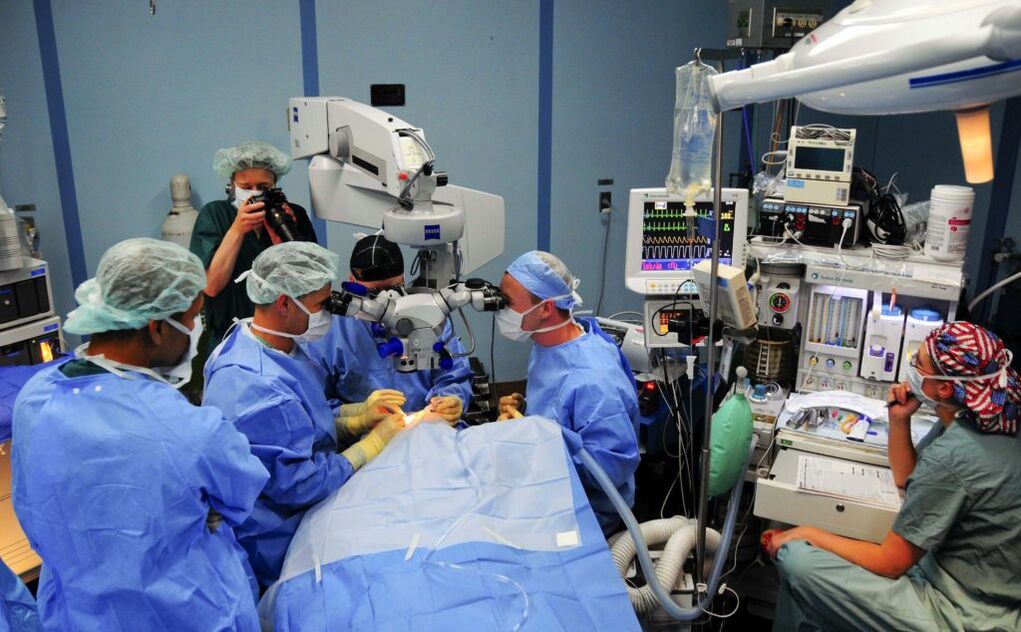
Indications
The procedure is determined after a thorough visual inspection and all necessary diagnostic procedures.Anydo surgery is a risk, therefore, before advising surgery, the doctor will try conservative treatment methods using drug therapy.Surgery is described only if the drug does not deliver the desired results.Indications for surgery:
- eye dystrophy;
- Waist formation in cornea;
- Keratoconus;
- traumatic damage to the visual organ;
- keratoglobus;
- Serious pathological changes in the organ.
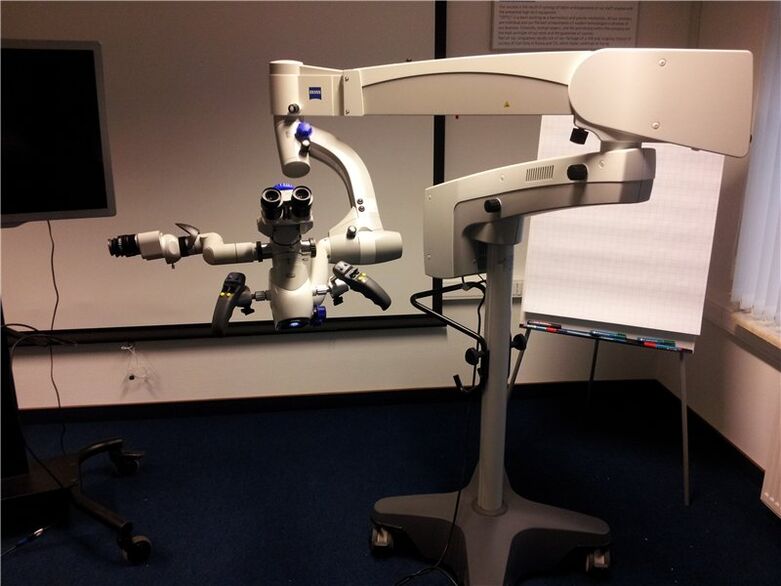
Types and behavior
Before surgery, it is necessary to undergo diagnostics, the doctor will express the list of tests in consultation.Vision correction methods are individually selected by each patient, they can be recommended to the patient with cataracts, myopia, strabismus, halazion, glaucoma and other dangerous deviations.During manipulation, ophtulation use modern medical equipment, intervention is performed using a microscope, vision is regulated through very small incisions.Since the surgery is simple and low -totraumatic, long hospital hospitalization is not required.After 2-3 hours, the doctor explains in detail to the patient all the nuances of the recovery period, how to take care of the eye and lets go home.The hospital is recommended only with serious pathology (retinal detachment, severe inflammation, penetrating wounds).There are such types of operations:
- Laser surgery;
- vitrectomy;
- Trabeculectomy;
- Ltp, lie;
- focochemulsification;
- scleroplasty;
- Keratoplasty;
- ENUCLEATION OF THE EYE;
- refractive lens replacement;
- Connecting the intersection;
- Anti -haracomatous surgeries.
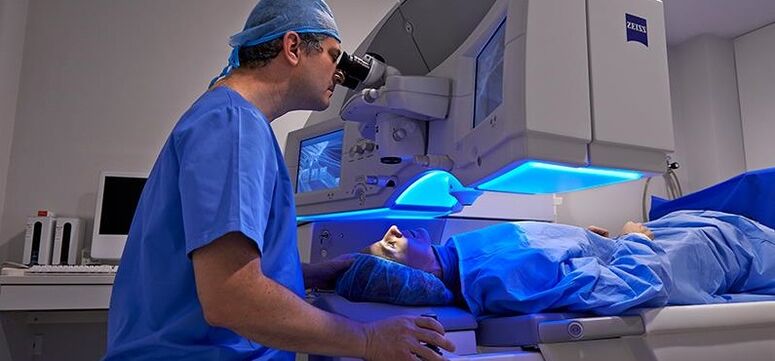
Laser vision correction
Do the surgery for retinal damage and rupture.Before agreeing, the patient must suffer a thorough examination.Points that expand the student are dripping before the intervention.With the help of a laser, the eyes are made of microsurgery (weak weak tissue areas are joined), this prevents fluid penetration and then detachment.Retina laser coagulation is simple, lasts a few minutes in time, and even children tolerate it well.
The operation takes place under local anesthesia.During the recovery period, the patient is recommended to abandon active sports, bad habits and physical overload.The negative consequences of laser vision correction can manifest within 3 hours - this is an increased secretion of tears, photophobia, redness, discomfort and rubbing in the eyes.Doctors do not recommend this procedure under the age of 18.The percentage of vision restoration after the laser correction is very high.
Keratoplastic
With irreversible pathological changes in the eye, ophthalmics recommend this procedure.The surgery to restore the vision and the eyes after the damage consists of complete removal of pathologically altered corneal fabrics, which are then replaced by the donor.There can be many reasons for surgical intervention - is keratoconus, severe damage to the eye tissue, EED, ulcerative changes caused by fungal infections and genetic predisposition.In operation, local anesthesia is used.Using the instruments, the doctor should remove the sore cornea and replace it with a healthy one, after which the stitches are applied.The time takes about 2 hours.The recovery period is 1 year.The eyes are recommended to protect themselves with glasses, this will prevent organ damage, post -surgery complications.
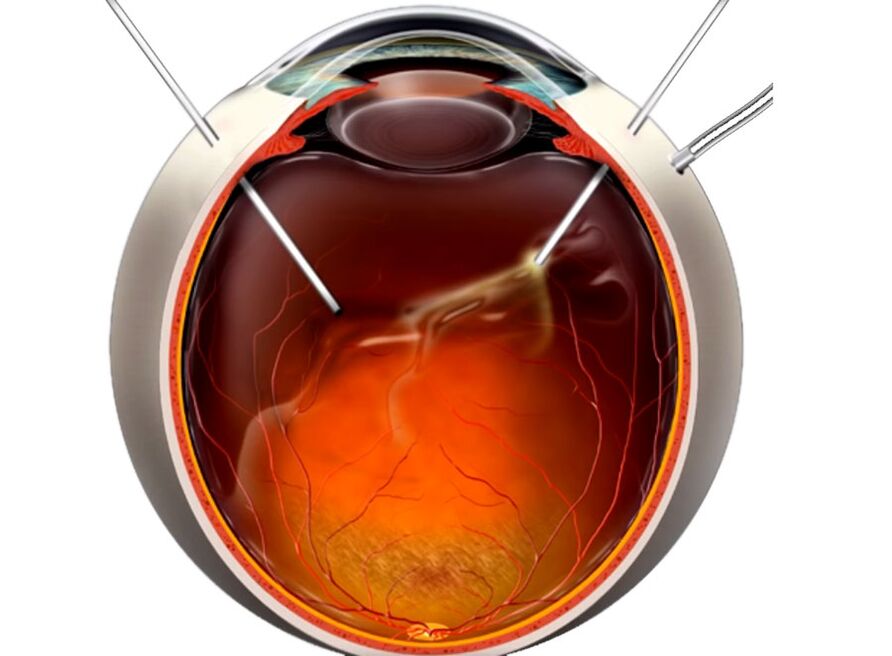
Vitrectomy
Make the vision correction with pathologically changed vessels in the retina and when removed.Thanks to professionally manipulated manipulations, the doctor will gain access to the back of the eye.After removal, the glass body is replaced by donor material.A saline solution, silicone oil, polymers and compounds of reactor -urgent are used as a special liquid.In ophthalmology, vitrectomy is considered a micro -vasic methodology, the intervention in the visual organ system is minimal, this contributes to the patient's return to the patient.With the help of this method, it is possible to restore the retinal structure, to prevent the development of pathologies whose names are attraction and retinopathy.
Since the air is filled with many dust particles, in order to prevent infection after correction of the organ, it is necessary to tightly glue the eye operated with a bandage for some time.
Anti -haracomatous operations
Eye surgery should be used if medication treatment is unauthorized, and only after a thorough examination.This type of intervention does not cause pain, it is done quickly, usually prescribed for the treatment of glaucoma with closed and open angle, and when the vessels germinate inside the eyes.The essence of the procedure is to eliminate the accumulated fluid inside the organ, it is performed by a laser.The most effective methodology is considered deep sclerkectomy non -appearance.In the process of therapy, the corneal layer interprets surgical, thereby reducing increased intraocular pressure.Possible consequences of operations of this type can be expressed in wound formation, at first the eyes can be red.
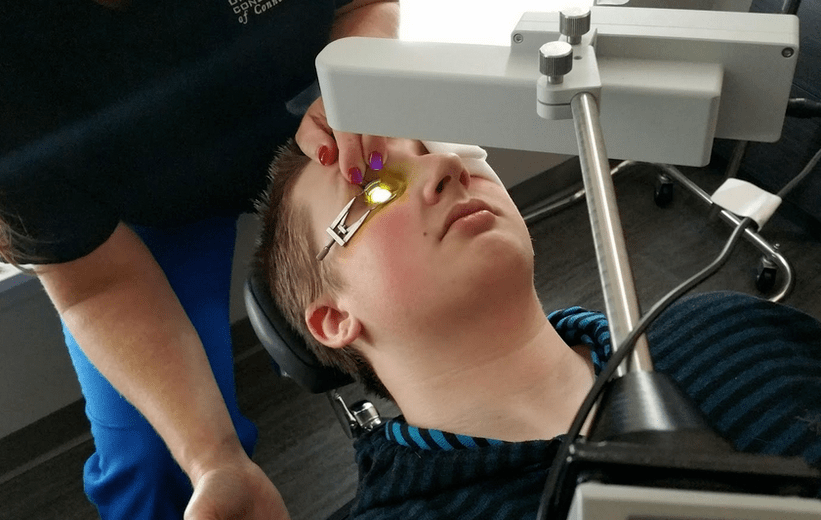
liaison
A very new method for treating keratoconus, using it, can prevent the development of the disease in the early stages.Using a tool whose name is a boring lamp, and the drip of vitamin B in the eye outlet2, it is possible to strengthen the cornea and stabilize the patient's condition.The plus of the procedure is that manipulation is performed only once, 1 hour is enough to accomplish it.After to reduce the risks of damage, a special protective lens is put in the eye of the eye.
ENUCEMATION OF THE EYE
This is a complex surgical operation, it is described only in extreme cases, if one organ cannot be stored in another way.The eyes are completely removed from the eye plug, and the fiberglass prosthesis is implanted in its place, it will look true.When performing, the side effects can develop, these are unforeseen inflammatory processes and displacement of implants.Evidence includes pathologies such as:
- glaucoma on a terminal scale;
- the appearance of pain and the development of inflammation in the blind organ;
- Severe injuries and neoplasms.
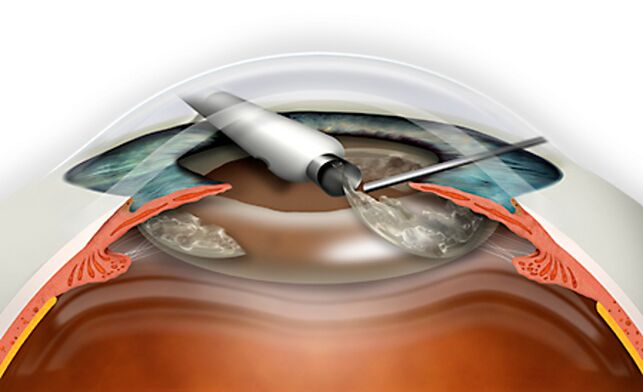
Refractal replacement of lenses
During surgery, the damaged element of the visual system with an artificial system occurs.When choosing an intraocular lens, the individual characteristics of the patient are taken into account (age, gender).The procedure lasts 25 minutes, local anesthesia is used, surgical manipulations are done without blood.Through the microdnars, using ultrasound, the lenses are converted into an emulsion and removed from the eye.Refraction replacement is done with pathologies such as:
- Direction of myopia and hyperopia;
- Presbyopia;
- Prohibition in laser correction;
- High -depth hyperopia, which can cause glaucoma;
- Violation of refraction and rapid loss of visual function.
Experlazer Vision Correction
Surgical intervention is recommended for eye pathologies such as strabismus, astigmatism, foresight.There are several ways to accomplish, this is a femo Lasik, the Federal Republic of the Criminal Code, Lasik.The doctor interrupts the upper layer of the cornea, its bending is changed using a cold radius of an excess laser, it is best to use local anesthesia and a mediocre.After an eximeerlazer correction, the patient escapes the problem, as the procedure is effective with 99%, in plus before other interventions.An unsuccessful operation leads to hyper correction, causes redness, and the corneal layer looks inflamed.
The correction of strabismus
Eye surgery for strabismus is aimed at correcting the symmetrical position of the organ.Surgical intervention is divided into two types: this is an increase in muscles that are responsible for the movement of the visual organ and relief in the occulomotor muscle.In the first case, part of the muscle system, as well as anti -positioning and tenoraphs, is restored, in the second they change the site of muscle fixation, extend it with plasticity.Which method to address, the surgeon decides, given the individual factors and the degree of severity of the pathology.
Scleroplasty
Doctors recommend referring to this type of intervention with the uncontrolled development of myopia.Using the methodology, strengthen and stabilize the patient's condition, stop losing vision.Scleroplasty is shown to children and adolescents at the age of 17 during the active period of growth, with such eye pathologies as rapid development myopia.
After removing the eye in the early days, the patient may feel severe pain, in this case, you should consult your doctor and choose the right analgesics.
Removing formations
Surgical intervention of this type is indicated for halazium, cystic neoplasm of the conjunctiva and Ptergium.By keeping the tweezers growing, the doctor further shortens it to eliminate the negative consequences, the wound is cauterized.To prevent infection, an antibiotic oil is applied to the eyelids, and a sterile bandage is used.The disadvantage is that the disease can develop again, in this case, return to this method of therapy cannot be avoided.
Removal of cataracts
During microsurgery, a pathologically altered lens is removed, the therapy is performed using laser and ultrasonic facialization.Special surgical remedies through micronades are diluted and removed from the eye, replaced with artificials.Sometimes they do a procedure called intracapsular and extracapsular extraction.




















